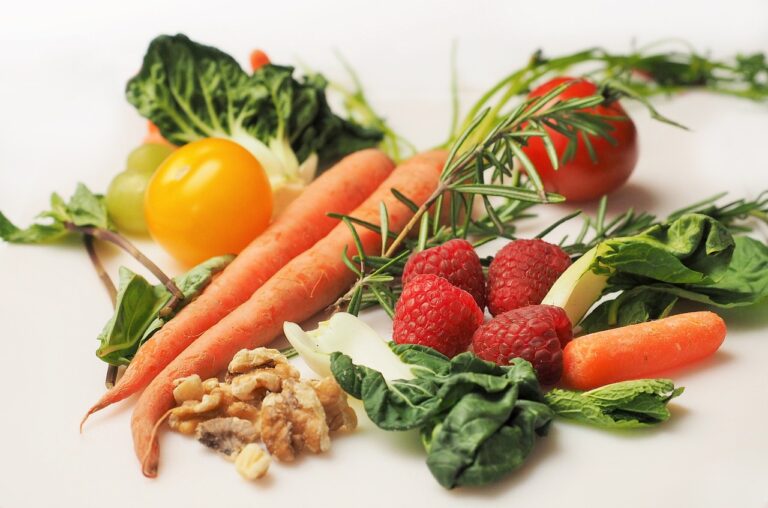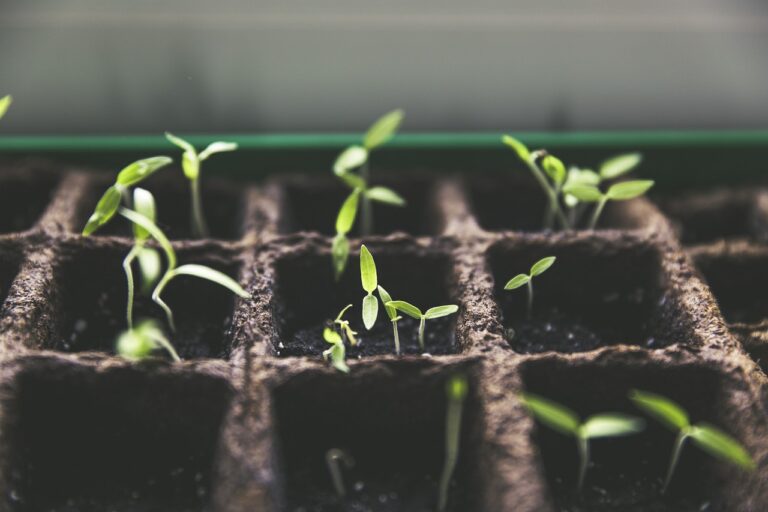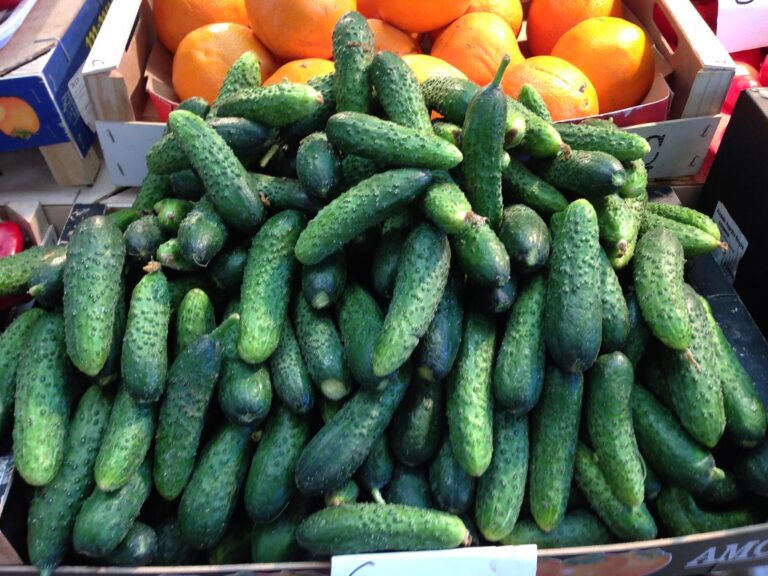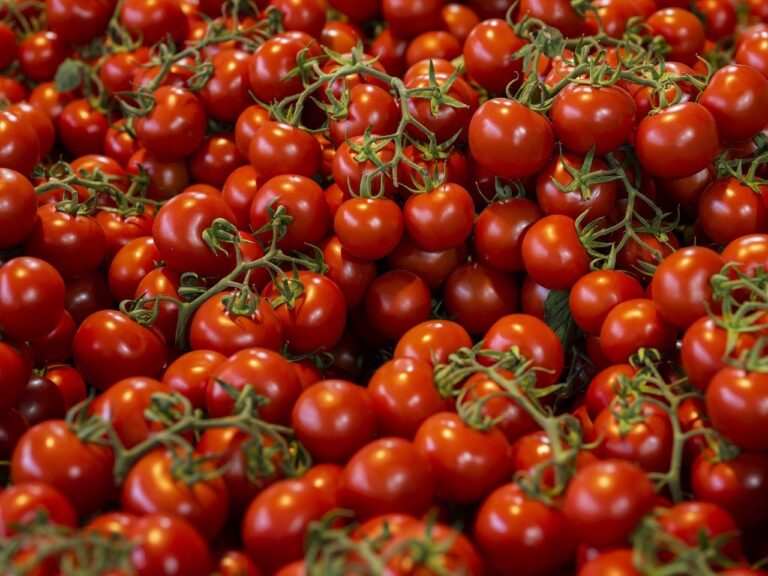The Harvesting Timeline of Carrots
Are you ready to learn the ins and outs of harvesting carrots? In this article, we will take you through the step-by-step process of growing and harvesting your own delicious carrots. From planting the seeds to thinning out the plants, we will cover all the stages of carrot growth. You will also discover some handy tips for storing and preserving your carrots. Get ready to become a pro at harvesting these tasty root vegetables!
Planting Carrot Seeds
To plant carrot seeds, gather the necessary materials and prepare a suitable garden bed. Start by obtaining high-quality carrot seeds from your local nursery or seed supplier. Look for varieties that are suited to your climate and soil conditions. Next, choose a sunny location in your garden that receives at least six hours of direct sunlight each day. Clear the area of any weeds or debris and loosen the soil with a garden fork or tiller. Add organic matter, such as compost or well-rotted manure, to improve soil fertility and drainage. Create shallow furrows in the soil, about half an inch deep, and space them about two inches apart. Carefully sow the carrot seeds along the furrows, covering them lightly with soil. Water gently but thoroughly, keeping the soil consistently moist until the seeds germinate. In about two weeks, you should start to see tiny carrot seedlings emerging from the soil.
Germination Process
During the germination process, you will see the carrot seeds sprouting and tiny seedlings starting to emerge from the soil. This is an exciting stage in the growth of your carrots. The germination process usually takes around 7 to 14 days, depending on the variety of carrot seeds you planted and the environmental conditions. As the seeds absorb water and swell, they break open, and a small root emerges first. Soon after, the shoot starts to push through the soil. It is crucial to ensure that the soil remains consistently moist during this stage to support the growth of the emerging seedlings. Once the seedlings have emerged, they will continue to grow, and you can soon begin the process of thinning them out to allow for proper spacing and optimal growth.
Establishing Carrot Seedlings
Once your carrot seedlings have emerged, it's time for you to establish their growth. To ensure healthy and robust carrot plants, there are a few key steps you should follow. Firstly, thin out the seedlings, leaving about 2-3 inches of space between each plant. This will allow them enough room to grow and develop properly. Next, provide them with adequate water, keeping the soil consistently moist but not overly saturated. Regularly check the soil moisture levels and adjust watering accordingly. Additionally, it is important to protect the seedlings from pests and weeds. Apply a layer of mulch around the plants to suppress weed growth and deter pests. Finally, consider adding a balanced fertilizer to provide essential nutrients for their growth. Following these steps will help establish strong and healthy carrot seedlings, ensuring a bountiful harvest.
Thinning Out Carrot Plants
After establishing your carrot seedlings, it's time for you to thin out the plants to ensure optimal growth and development. Thinning out carrot plants is an important step in the gardening process as overcrowding can lead to stunted growth and misshapen carrots. To begin, identify the strongest seedlings and gently pull out the weaker ones, leaving about two inches of space between each remaining plant. It's crucial to perform this task when the plants are about two inches tall to minimize root disturbance. Remember to water the plants before thinning to make it easier to remove them. Thinning out carrot plants allows the remaining plants to access more sunlight, nutrients, and water, resulting in healthier and more robust carrots.
Carrot Growth Stages
To understand the growth stages of carrots, you need to observe the development of the plant from seed to harvest. Carrots go through several distinct stages as they grow. It all starts with the germination stage, where the seed absorbs water and sprouts a root and shoot. Next comes the seedling stage, where the plant develops its first true leaves and starts to grow rapidly. As the plant continues to grow, it enters the vegetative stage, where it focuses on leaf and root growth. Finally, the plant reaches the reproductive stage, where it forms flowers and eventually produces seeds. Understanding these growth stages is crucial for proper care and maintenance of your carrot plants, ensuring a successful harvest.
Judging Carrot Size and Maturity
As you observe the growth stages of your carrot plants, you can assess their size and maturity by judging certain indicators. One key indicator is the size of the carrot's shoulders. When the shoulders are about 1 inch in diameter, the carrot is typically ready for harvest. Additionally, you can gently pull up a small carrot to check its size. If it is at least a half-inch thick at the top, it is likely mature enough to be harvested. Another sign of maturity is the color of the carrot. Look for a vibrant orange color, as this indicates that the carrot has reached its full potential. Remember to use your judgment and consider the specific variety of carrot you are growing, as some may have different maturity requirements. By paying attention to these indicators, you can ensure that you harvest your carrots at the perfect size and maturity for the best taste and quality.
Harvesting Baby Carrots
When your carrot plants have reached the appropriate size and maturity, you can start harvesting baby carrots using a gentle pull to remove them from the ground. Baby carrots are typically ready to be harvested around 60-70 days after planting. Look for carrots that are about 1/2 inch in diameter and 3-4 inches long. To harvest, firmly grasp the green tops of the carrot and gently pull upward, wiggling if necessary to loosen the roots from the soil. Avoid yanking or twisting, as this can damage the carrot. Once harvested, rinse off any dirt and trim the green tops, leaving about 1/2 inch attached. Baby carrots are delicious raw, steamed, or roasted, making them a versatile addition to salads, stir-fries, and side dishes. Enjoy the sweet, tender crunch of your homegrown baby carrots!
Harvesting Full-sized Carrots
Once your carrot plants have reached the appropriate size and maturity, you can begin harvesting full-sized carrots by gently pulling them from the ground. It is important to wait until the carrots have fully developed to ensure they have reached their optimal size and sweetness. To harvest, start by loosening the soil around the carrot with a garden fork or trowel. Then, grasp the carrot near the base and slowly pull it out, being careful not to break the foliage or damage the carrot. If the soil is too compacted, water it beforehand to make the task easier. Remove any excess soil by gently brushing it off, and then trim the carrot tops, leaving about an inch of foliage. Your freshly harvested carrots are now ready to be enjoyed in your favorite recipes.
Storage and Preservation Tips
To properly store and preserve your freshly harvested carrots, follow these tips. First, gently remove any excess soil from the carrots, being careful not to damage the skin. Trim the green tops, leaving about an inch of stem. If the carrots are dirty, you can rinse them with water, but make sure to dry them thoroughly before storage. Next, choose a storage method that suits your needs. For short-term storage, place the carrots in a plastic bag in the refrigerator's crisper drawer. For longer-term storage, you can store the carrots in a cool, dark, and well-ventilated place, such as a cellar or root cellar. You can also consider freezing or canning the carrots for even longer preservation. By following these simple tips, you can enjoy your homegrown carrots for weeks or even months to come.
Common Carrot Harvesting Mistakes
- Avoid harvesting too early or too late to ensure the best quality carrots for your table. Harvesting carrots at the right time is crucial for their taste and texture. If you harvest them too early, they will be small and immature, lacking the sweet flavor you desire. On the other hand, if you wait too long, the carrots may become woody, fibrous, and less appetizing. To determine the perfect time for harvesting, pay attention to the carrot's size and color. Mature carrots should be about 1 inch in diameter and have a vibrant orange color. Gently pull the carrot from the ground, making sure to loosen the soil around it. By following these guidelines, you can enjoy the freshest and most delicious carrots on your plate.
Conclusion
In conclusion, knowing the harvesting timeline of carrots is essential for a successful harvest. From planting carrot seeds to thinning out plants and monitoring their growth stages, each step plays a crucial role in ensuring optimal carrot production. Harvesting baby carrots and full-sized carrots requires careful attention and proper technique. Storing and preserving carrots correctly will help to extend their shelf life. By avoiding common harvesting mistakes, you can enjoy a bountiful carrot harvest all year round.






